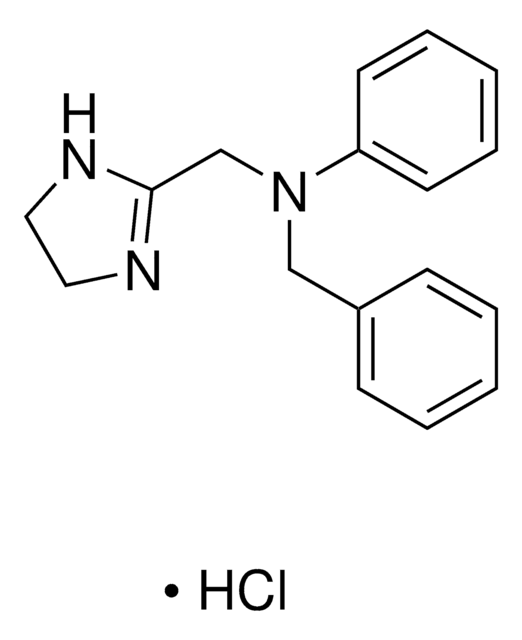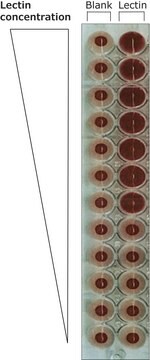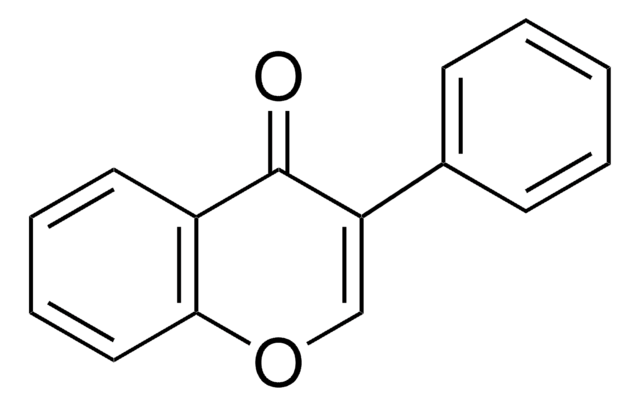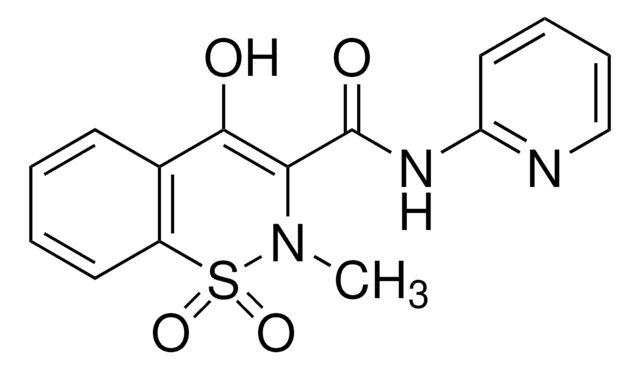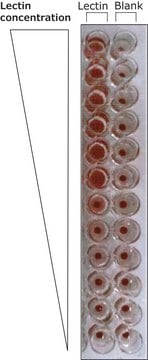About This Item
Wzór empiryczny (zapis Hilla):
C78H138N20O16
Masa cząsteczkowa:
1612.05
Kod UNSPSC:
12352200
NACRES:
NA.32
Polecane produkty
Próba
≥95% (HPLC)
Postać
lyophilized
skład
Peptide Content, ≥70%
warunki przechowywania
protect from light
temp. przechowywania
−20°C
Amino Acid Sequence
Leu-Lys-Leu-Lys-Ser-Ile-Val-Ser-Trp-Ala-Lys-Lys-Val-Leu-NH2
Zastosowanie
Mastoparan B (LKLKSIVSWAKKVL-NH2), a cationic decapeptide amide toxin, is used to study its mechanisms of histamine release and edema inducing and haemolytic activities.
This page may contain text that has been machine translated.
Kod klasy składowania
11 - Combustible Solids
Klasa zagrożenia wodnego (WGK)
WGK 3
Temperatura zapłonu (°F)
Not applicable
Temperatura zapłonu (°C)
Not applicable
Certyfikaty analizy (CoA)
Poszukaj Certyfikaty analizy (CoA), wpisując numer partii/serii produktów. Numery serii i partii można znaleźć na etykiecie produktu po słowach „seria” lub „partia”.
Masz już ten produkt?
Dokumenty związane z niedawno zakupionymi produktami zostały zamieszczone w Bibliotece dokumentów.
Structure and biological activities of a new mastoparan isolated from the venom of the hornet Vespa basalis.
Ho CL, Hwang LL.
The Biochemical Journal, 274, 453-456 (1001)
C L Ho et al.
Toxicon : official journal of the International Society on Toxinology, 34(9), 1027-1035 (1996-09-01)
Mastoparan B (MP-B) is a cationic tetradecapeptide isolated from the black-bellied hornet (Vespa basalis) venom. It has a primary structure (LKLKSIVSWAKKVL-CONH2) distinct from other vespine mastoparans. The peptide caused a dose-dependent swelling in rat hind paw and showed a potent
C L Ho et al.
Toxicon : official journal of the International Society on Toxinology, 39(10), 1561-1566 (2001-08-02)
Mastoparan B (MP-B) is a cationic tetradecapeptide (LKLKSIVSWAKKVL-CONH(2)) isolated from the venom of the Taiwan hornet Vespa basalis. Unlike other vespid mastoparans, the peptide is capable of inducing short-term hypotension and causes hemolysis in animals. This study was aimed to
H M Yu et al.
Biochemistry and molecular biology international, 29(2), 241-246 (1993-02-01)
Mastoparan B, a tetradecapeptide toxin (LKLKSIVSWAKKVL) isolated from the hornet (Vespa basalis) venom, was synthesized chemically. The physical and biological properties of both the native and synthetic peptides were studied and proved to be identical. Mastoparan B was found to
Nasz zespół naukowców ma doświadczenie we wszystkich obszarach badań, w tym w naukach przyrodniczych, materiałoznawstwie, syntezie chemicznej, chromatografii, analityce i wielu innych dziedzinach.
Skontaktuj się z zespołem ds. pomocy technicznej